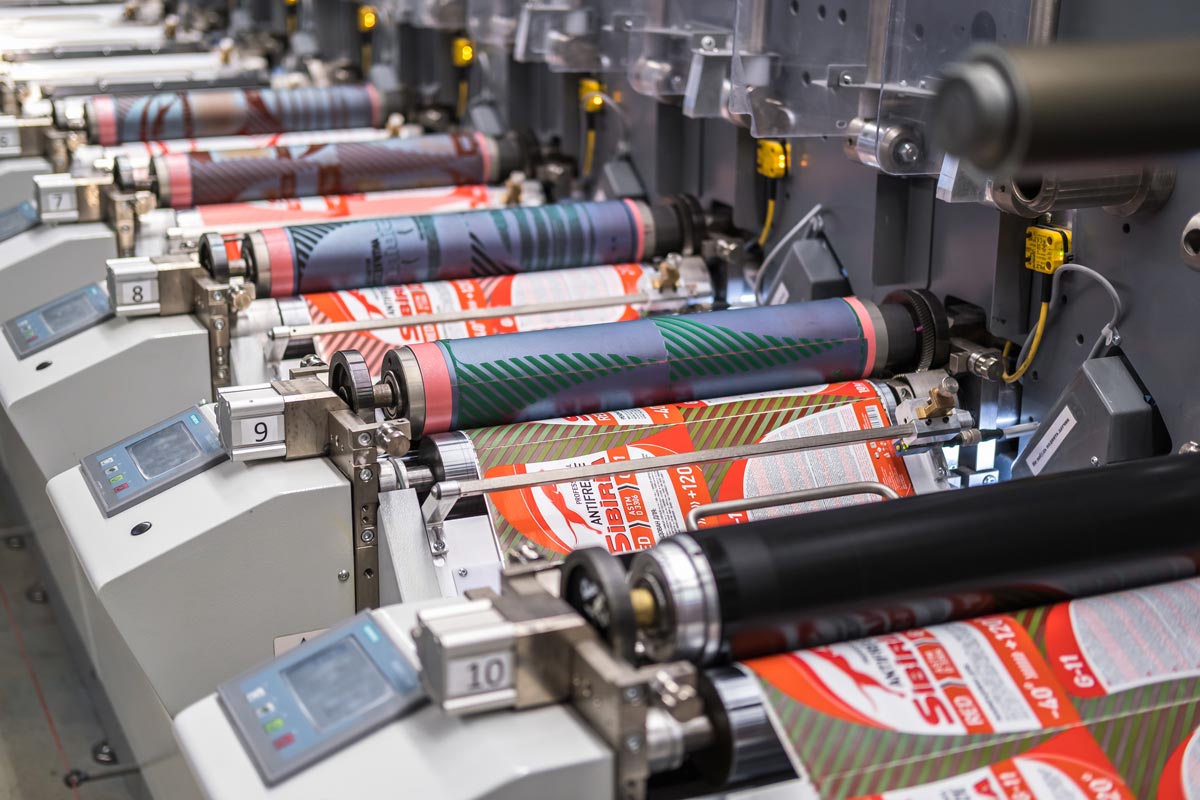The world of printing is vast and continually evolving, especially when it comes to packaging solutions like shrink sleeves. One technology that stands out is flexo for shrink sleeves. This method has become increasingly popular due to its efficiency and effectiveness in producing high-quality prints. In this article, we will explore the significance of flexo printing in creating vibrant and durable shrink sleeves.

What is Flexographic Printing?
Flexographic printing, commonly known as flexo, is a versatile printing technique that uses a flexible relief plate. It is used on almost any type of substrate, including plastic, metal, and paper. Flexo is known for its speed and cost-effectiveness, making it a preferred choice for large-scale printing projects. Learn more about flexographic printing here.
Introduction to Shrink Sleeves
Shrink sleeves are an innovative way of labeling products. These sleeves, made from polymer plastic film, wrap around the entire product, providing 360-degree coverage. When heat is applied, the film shrinks tightly around the shape of the container. This method is particularly popular in industries like beverages and pharmaceuticals.
Benefits of Using Flexo for Shrink Sleeves
The integration of flexo in producing shrink sleeves brings numerous advantages:
1. High-Quality Prints
Flexo technology ensures that the prints are vibrant and of high quality. The precision of the plates and the consistency of the ink distribution result in sharp and clear images.
2. Cost-Effective Production
Compared to other printing methods, flexo is more economical, especially for large volumes. The setup cost is relatively low, and the speed of production is unmatched, reducing overall expenses.
3. Versatility with Substrates
Flexo can print on various substrates, which is crucial for shrink sleeves as they are used on diverse products. Whether it’s glass, plastic, or metal, flexo can handle it all.
How Flexo Machines Work
The process of flexographic printing involves several steps:
1. Plate Creation
The first step in flexo printing is creating the plate. This is a flexible sheet that contains the image or text to be printed. It is mounted on a cylinder, which will then transfer the ink to the substrate.
2. Ink Application
Once the plate is created, ink is applied. The ink used in flexo is typically fast-drying and water-based, making it environmentally friendly.
3. Printing Process
The inked plate is then pressed against the substrate, transferring the image. The substrate then moves through a heated chamber to dry the ink, completing the printing process.
Challenges in Flexo Printing for Shrink Sleeves
While flexo offers many benefits, there are challenges to consider:
1. Plate Distortion
Due to the flexible nature of the plates, there can be distortion, affecting the print quality. However, advancements in technology are continuously addressing these issues.
2. Ink Spreading
Controlling the spread of ink can be challenging, but with the right techniques and equipment, this can be managed effectively.
Advancements in Flexo Printing Technology
The world of flexo printing is not static. Recent advancements have significantly improved the quality and efficiency of this printing method. Explore the latest flexo machines.
Environmental Impact and Sustainability
With growing awareness of environmental issues, the sustainability of printing methods is crucial. Flexo printing uses eco-friendly inks and substrates, reducing the carbon footprint of production processes.
Applications of Flexo for Shrink Sleeves
Shrink sleeves produced through flexo printing are used across various industries:
1. Beverage Industry
In the beverage industry, shrink sleeves provide an attractive and durable labeling solution that can withstand moisture and temperature fluctuations.
2. Pharmaceutical Industry
In pharmaceuticals, shrink sleeves ensure product safety and provide ample space for necessary information without compromising on aesthetics.
Future of Flexo Printing in Shrink Sleeves
The future of flexo for shrink sleeves is promising. With continuous technological advancements and a focus on sustainability, this method is set to dominate the printing industry.
1. Integration of AI
Artificial Intelligence is being integrated into flexo printing to enhance precision and efficiency. Read more about AI in flexo.
2. Speed Optimization
Efforts to optimize the speed of flexo printing are ongoing, making it even more competitive. Learn about speed optimization.
Conclusion
In conclusion, flexo for shrink sleeves is a significant advancement in the printing industry. Its benefits, from cost-effectiveness to versatility, make it an ideal choice for businesses looking to enhance their product packaging. The future looks bright with ongoing advancements and a focus on sustainability, ensuring that flexo remains at the forefront of printing technology.

FAQs
What are the main benefits of flexo for shrink sleeves?
The main benefits include high-quality prints, cost-effective production, and versatility with substrates.
Can flexo printing handle all types of substrates?
Yes, flexo printing is versatile and can handle various substrates, including plastic, metal, and paper.
Is flexo printing environmentally friendly?
Flexo printing uses eco-friendly inks and substrates, making it a sustainable choice for printing.






